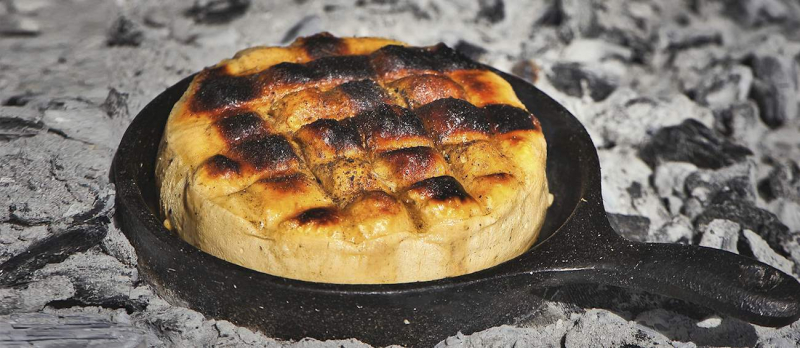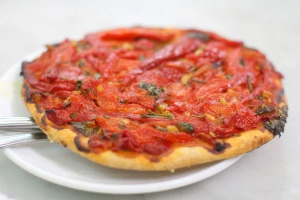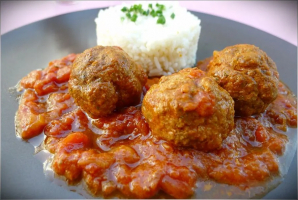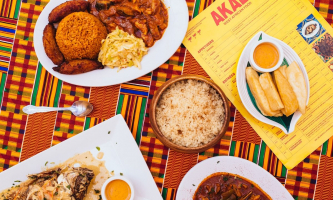Top 10 Best Foods in Argentina
Argentina is one of the five countries in the world with more cattle than humans, so it's no wonder that steak is ubiquitous there. However, you may not ... read more...realize that Argentina is a big and diversified country with an equally diverse cuisine influenced by Spanish and Italian influences. Here are some of the Best Foods in Argentina.
-
The asado, or barbeque, also known as parrillada, is the path to Argentina's heart. this dish is among Best Foods in Argentina to try. This is the country's national cuisine, which originated with the country's gauchos, or cowboys, who lived off the plentiful cows that dotted the country's plains.
Spend a relaxing afternoon alongside the warmth of a grill or open fire, dining on plentiful grilled meats, before leaving Argentina. Asado is both a social gathering around a grill with friends and a grilling technique; it's a multi-step process that can take several hours. Beef, pig, ribs, sausages, blood sausages, and sweetbreads will all be served fresh off the grill. Argentina's traditional cuisine. Look for a whole lamb or pig roasting over an open flame in Patagonia.
Beef, pig, ribs, sausages, blood sausages, and sweetbreads will all be served fresh off the grill. Look for a whole lamb or pig roasting over an open flame in Patagonia. This is Argentina: lightly salted, topped with chimichurri, and matched with malbec.

https://www.travelandleisure.com/ 
https://latinamericanpost.com/ -
Chimichurri is to steaks in Argentina what harissa is to Moroccan cuisine and mustard is to hot dogs in the United States. Chimichurri is a fragrant mixture of parsley, garlic, oregano, olive oil, vinegar, and fiery red pepper flakes, while other ingredients such as coriander or chopped tomatoes are occasionally included, while some are omitted, since there are several chimichurri versions.
This brilliant green sauce (which can also be used as a marinade) is often served with grilled beef steaks, but it also works well with grilled pig, chicken, lamb, fish, or duck, and it's often paired with Malbec wine. There are two theories about the origin of the name: one claims that it was invented (and aptly named) by a British meat dealer named Jimmy Curry, and the other claims that it comes from the phrase "che mi curry," which was spoken by captive English soldiers after their failed attempt to invade Argentina, which was then a Spanish colony.
Although the origin of the word is unknown, it is a known truth that chimichurri will bring zing to any cuisine.
Photo: Shutterstock 
http://boundbyfood.com/ -
In Argentina, provoleta, or grilled provoleta cheese, is commonly served as an appetizer or as a side dish to grilled meats in asado, or Argentine barbecue. With their signature dish of provoleta, Argentineans offer grilled cheese a whole new meaning.
Provoleta, Argentina's version of provolone, is a result of the country's large Italian population. Chilli flakes and herbs like oregano are sprinkled on top of pungent, sharply sliced discs of the cheese, which are then grilled. On the outside, the nearly melted cheese is crisp and slightly caramelized, while the inside is gooey and smokey. Add a dab of olive oil or a spoonful of chimichurri to finish.
Because of its compact and strong texture, semi-hard provolone is ideal for grilling. It's cut about an inch thick for asado, seasoned with oregano and perhaps a small sprinkling of dried red chili flakes, then grilled until it just starts to melt in the center. Provoleta is ideally served with crusty bread on the side and a garlicky chimichurri sauce on top. Before a meal or as a side to barbecued meats, grilled provoleta cheese is popular.

Photo: Shutterstock 
Photo: Shutterstock -
Cows on the loose Argentina's vast grasslands have produced not just excellent meat, but also excellent dairy. And dulce de leche, one of Argentina's culinary jewels, is made from condensed milk. This thick caramel, loosely translated as'milk jam,' is the product of condensed milk being progressively reduced until sweetened and sticky. It can be found in everything from alfajores and dessert empanadas to helado (ice cream), which is lavishly drizzled with it and consumed by the kilo.
Dulce de leche, one of the Best Foods in Argentina, is a dessert made from condensed milk. It's traditionally created by heating sweetened cow's milk until it caramelizes and thickens to the consistency of a spread, a cake and pie filling, or an ice cream topping.
It is reported that dulce de leche began in Buenos Aires, when a serving lady was heating sugar and milk to make la lechada. She discovered it had turned into a dark brown stuff when she left it on the heat a little longer than usual, and dulce de leche was formed.
Today, dulce de leche is used to flavor chocolates, cakes, cookies, waffles, and ice creams, and is occasionally flavored with vanilla, lemon, or cinnamon. This delicious dessert is popular not only in Argentina, but around the world, as seen by the numerous variations on the original recipe found in France, Norway, Russia, and Latin America.

http://dishbydish.net/ 
https://www.argentina-excepcion.com -
Alfajor is a sort of cookie sandwiched between two delicious cookies with dulce de leche or milk jam filling. After that, the mixture is either dipped in chocolate or dusted with confectioners' sugar. Alfajor is derived from the Arabic term al-has, which meaning stuffed or filled.
Although the cookies are popular throughout Latin America, they originated in Andalusia, Spain, and were developed during the country's Moorish occupation.
When the Spaniards arrived in America, they took their foods and traditions with them, and over time, practically every country in Latin America has changed the Spanish alfajor to make it their own, resulting in a wide variety of fillings, including chocolate mousse, fruit, and cream.
The cookies are most widely marketed and consumed during the Christmas season in Spain, although it should be noted that the original Spanish alfajor, which is made with flour, honey, cinnamon, and almonds, differs significantly from the South American version.
Photo: Shutterstock 
Photo: Shutterstock -
Empanadas, which are crescent-shaped, flaky pastry dough pies prevalent across Latin America that are easy to prepare, economical, and convenient, are best described as small pockets with heated fillings. The dish's name comes from the Spanish word empanar, which means "breaded" or "covered with bread."
Empanadas are thought to have originated in Galicia, Spain, as a portable and satisfying supper for working people, providing energy and nutrients for a day of hard labor. They are frequently stuffed with a variety of spiced meats and veggies and baked and fried till golden, depending on regional preferences.
Empanadas, another gift from the Moors to the Spaniards and, eventually, to the Argentines, where this hot, inexpensive, and portable lunch became popular among the working classes. Empanadas are a type of South American pasty that are deep-fried or baked before being filled with a sweet or savory filling that varies by province.
As is customary in Córdoba, dessert empanadas are typically filled with quince jam, sweet potato paste, or dulce de leche and topped with cinnamon, sugar, or sweet raisins. Empanadas are savory empanadas filled with stewed and spiced ground beef, chicken, goat, cheese, and/or vegetables, with markings on the dough fold indicating the contents.

Photo: Shutterstock 
Photo: Shutterstock -
Matambre Arrollado is among the Best Foods in Argentina thanks to its tasty Argentinian flank steak with veggies, hard-boiled eggs, spices, and olives stuffed inside. While the big slabs of Argentinean meat are not to be missed, a matambre arrollado should be tried at least once. Like a flank steak, this ultra-thin cut of beef is thinly sliced and packed with vegetables, hard-boiled eggs, herbs, and olives. The filling is rolled around the meat, which is then boiled, roasted, or grilled.
Matar is a Spanish word that means "to murder," and "hambre" is a Spanish word that means "hunger." As a result, matambre is known as a "hunger killer" because it is the first thing to be ready on the grill, quenching everyone's appetite while the remainder of the asado cooks.
Matambre literally means'hunger killer,' and arrollado means'to roll up.' According to legend, these are generally the first meats to cook on the grill, staving off hunger while the remainder of the asado cooks.

https://cuk-it.com/ 
https://novacomunicaciones.com.ar -
Mate is a herbal infusion made from the yerba mate plant's dried and powdered leaves. The drink is thought to have originated among the Guarani people, who were the first to harvest the plant and brew mate. The leaves are steeped and served in a hollowed gourd with a bombilla, which is a specialized metal straw that also serves as a sieve.
Prior to European colonization, indigenous cultures in South America were the first to use and cultivate yerba mate. It's a caffeine- and herbal-infused drink that's filling everything from to-go cups to shallowed-out squash gourds around the country. Yerba mate leaves are dried, cut, and processed into a powder, or steeped in hot water as whole leaves. Drinking yerba mate is a social activity, and the gourd, which is equipped with a metal straw that also serves as a sieve, is frequently passed around a group, with each individual taking a drink before passing.
The drink has always been prepared and enjoyed at various gatherings in South America, and both the gourd and the bombilla are typically shared among the entire group. The infusion contains a lot of caffeine and has a slightly bitter herbal flavor. Mate is a dried and crushed yerba mate leaf infusion.
The drink is thought to have originated with the Guarani people, who were the first to harvest the plant and create mate with it. Traditionally, the leaves are steeped and served in a hollowed gourd with a bombilla—a unique metal straw that also serves as a sieve.The drink has always been prepared and enjoyed at various celebrations in South America, with both the gourd and the bombilla being divided among the entire party. The infusion has a slightly bitter herbal flavor and is high in caffeine.

https://www.foodandwine.com/ 
https://creativemarket.com/ -
Choripán is the pinnacle in Argentine street cuisine, consisting of a chorizo sausage sandwiched between two crusty buns with a selection of toppings. Choripán is the ultimate Argentinean street snack, a must-have before any football match, a favorite among cab drivers, and a staple at markets and street vendors. Because it is generally served at street stands throughout Latin America, it is usually enjoyed on the go.
Choripán is made up of two words: chorizo, which refers to sausage, and pan, which means bread. Made with pork and beef chorizo cooked over charcoal or wood flames, the sausage is grilled, then butterflied down the center, topped with chimichurri, and served between slices of crusty bread.
Caramelized onions, pickled aubergines, green peppers, and a variety of additional seasonings are added depending on the province. The choripán, another gaucho tradition, has undergone a rural-to-urban transformation that has cemented its place on the country's gastronomic map.
https://www.taste.com.au 
Photo: Shutterstock -
Another well-known Argentine dish is the carbonada. Carbonada is a traditional, stick-to-your-ribs dish throughout the cooler months. Carbonada is a savory, meaty, brothy stew cooked with meat, sweet and white potatoes, corn on the cob, carrots, peppers, bacon, and fruits (ranging from dried apricots and raisins to peaches, pears and green grapes).
The stew is spooned into a hollowed-out pumpkin, which is then cooked on the grill. Various carbonada variations may be found all around the country, and it can even be found in empanadas, where it serves as the ideal portable stew. Diners can scrape the inside of the pumpkin to enrich the stew in addition to using it as a bowl.
This hearty meat stew hails from Patagonia and is typically made with chunks of beef, potatoes, squash, sweet potatoes, corn, and tomatoes. It's commonly enriched with dried or fresh fruit, such as apricots or raisins, and it's occasionally stuffed with a whole pumpkin before being baked. Criolla carbonada is a wintertime favorite that is also popular in Uruguay.

https://www.pinterest.com/ 
Photo: Shutterstock






























